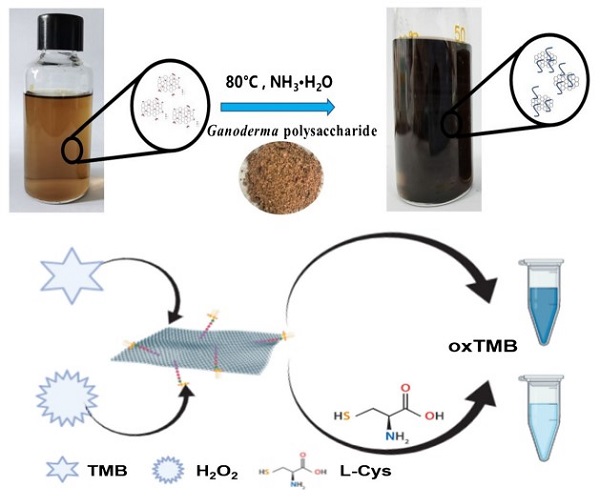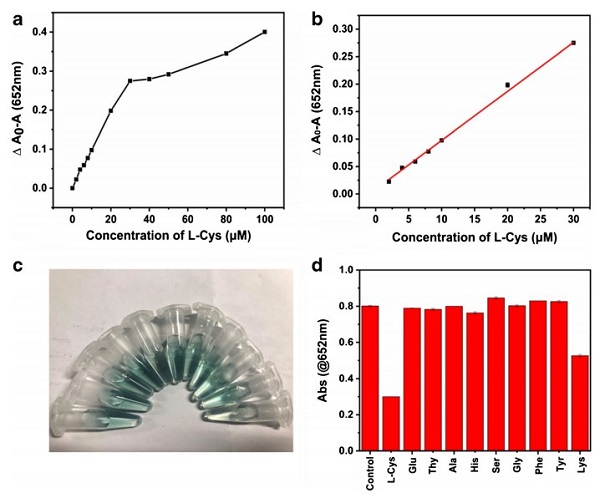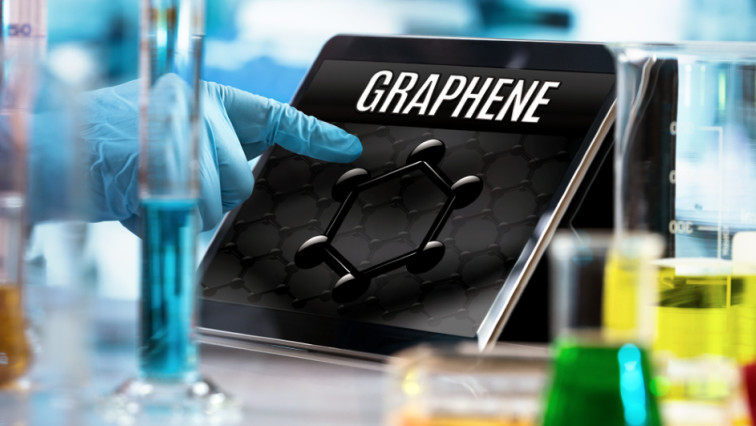Recently, the research group of Prof. HUANG Qing from the Institute of Intelligent Machines, Hefei Institutes of Physical Science (HFIPS), successfully prepared graphene-based nanozymes through a simple and green preparation method, and verified that it can be used to detect L-cysteine in serum.
In this research, researchers used Ganoderma lucidum extract polysaccharides as reducing agents and stabilizers to prepare graphene-based materials under mild hydrothermal conditions. The polysaccharides in Ganoderma lucidum are rich in types and have many excellent biochemical properties. It is proved that Ganoderma polysaccharide can fully reduce graphene oxide, and the existence of Ganoderma polysaccharide can improve the stability and dispersion of graphene-based materials in water.
They further studied the catalytic process of the as-synthesized nanozyme, which indeed showed good catalytic activity. Based on this activity, they developed a colorimetric method for detection of L-cysteine in serum, an essential amino acid which is involved in protein synthesis, post-translational modification and metabolism.

Figure 1. Schematic diagram of the preparation of graphene-based nanozymes and the detection of L-cysteine.

Figure 2. a-b: determination of L-cysteine; c-d: specific detection of cysteine.
"Disorder of L-cysteine is associated with severe neurotoxicity and cardiovascular disease,” said Prof. Huang, who has been focusing on the research of Ganoderma lucidum, a genus usually growing on decaying hardwood trees, for decades, “L-cysteine was successfully detected in serum with high sensitivity and selectivity in nanozyme method, suggesting its potential application as an effective nanozyme for biological systems.”
Read the original article on Hefei Institutes of Physical Science.







